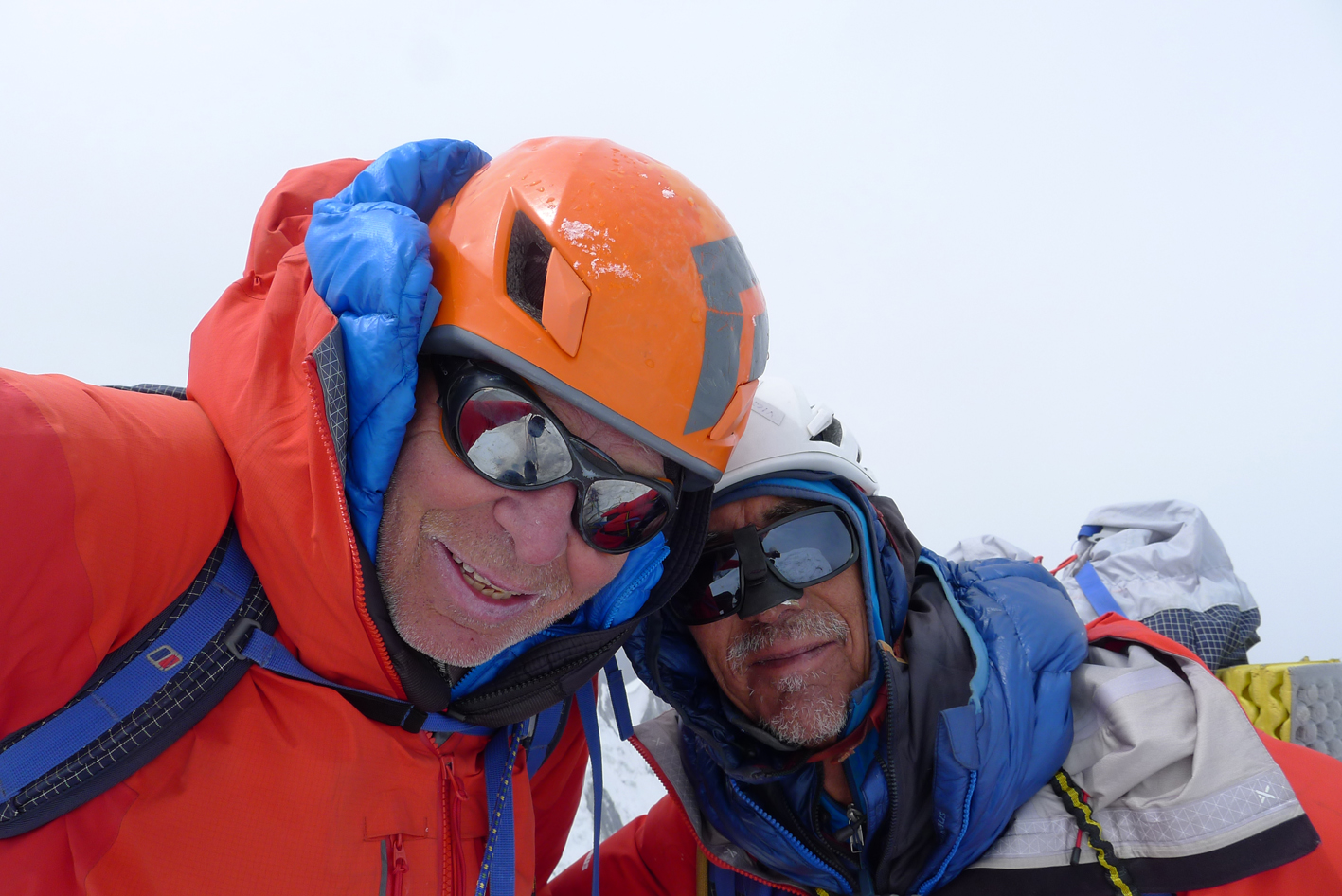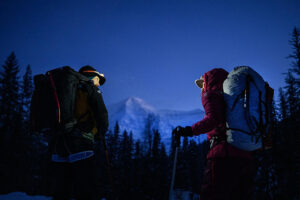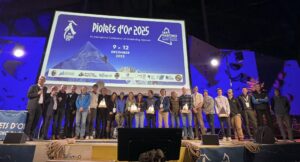Veteran British climbers Mick Fowler (68) and Victor Saunders (74) are in great shape and thirsty for more adventures. Forty years after their first expedition together in Pakistan, they have bagged the first ascent of Yawash Sar (6,258m) in the Karakoram. They climbed a new route on its northwest face in their usual elegant, alpine style.
Previously, the climbers had announced the expedition but not their target peak. It’s their first climb together in Pakistan since they took on the north face of Sersank in 2016, and since Fowler survived cancer.
Single push on unknown terrain
Fowler and Saunders set up Base Camp at 4,600m on the Koksil Glacier and launched a single, alpine-style push in mid-September. They made the summit on September 14.
News of their success has only just arrived because the pair needed to trek back to the road after weeks without connection.

Saunders during the climb. Photo: Mick Fowler
“The face was complex and we were fortunate to find good climbing conditions. After extensive binocular research, we weaved our way through numerous probable cul-de-sacs without reaching any impasses,” Fowler reported. “A notable feature of the climb was a lack of good bivouac sites and at one point we endured an excruciatingly uncomfortable hanging bivouac in strong winds.”
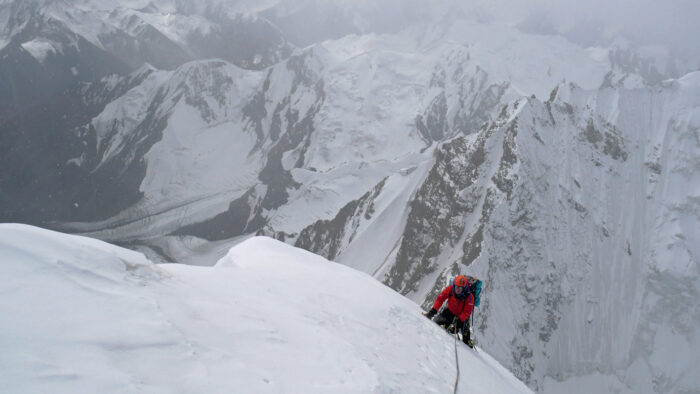
Fowler in heavy snow at 6,250m, near the summit of Yawash Sar. Photo: Victor Saunders
A ‘Pakistani Matterhorn’
Some 37 years ago, Saunders and Fowler made the first ascent of the legendary Golden Pillar of Spantik. They are equally excited about this climb. They describe it as one of the best ascents they’ve done together, thanks to the quality of the climbing and the beauty of the objective.
The peak is a stunning snow spire that the climbers dubbed “the Matterhorn of the Khunjerab.” It rises from the Khunjerab sub-range of the Karakoram surrounded by rugged terrain.

The northwest face of Yawash Sar. Photo: Fowler/Saunders
Another British team attempted the peak in 2022. They tried from the south side, but loose rock forced the climbers back from 6,000m, according to the press release by team sponsor Berghaus.
Fowler and Saunders climbed a new route on a different side of the mountain. It was an isolated place, and they climbed self-sufficiently. It’s hard to find better examples of what it means to be living climbing legends.
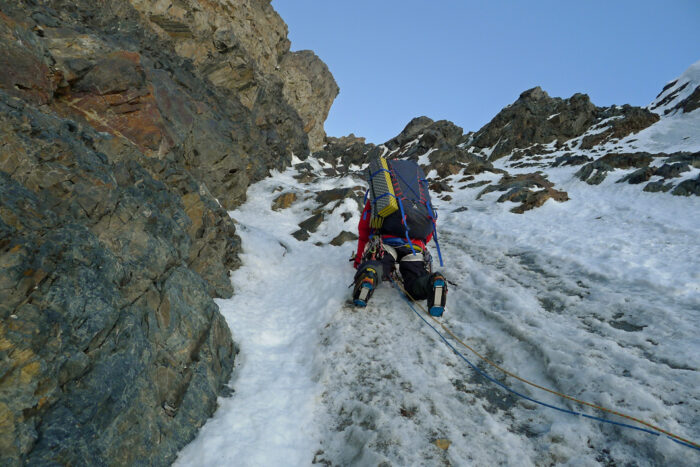
Fowler dealing with a technical ice pitch. Photo: Victor Saunders
